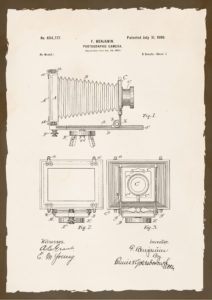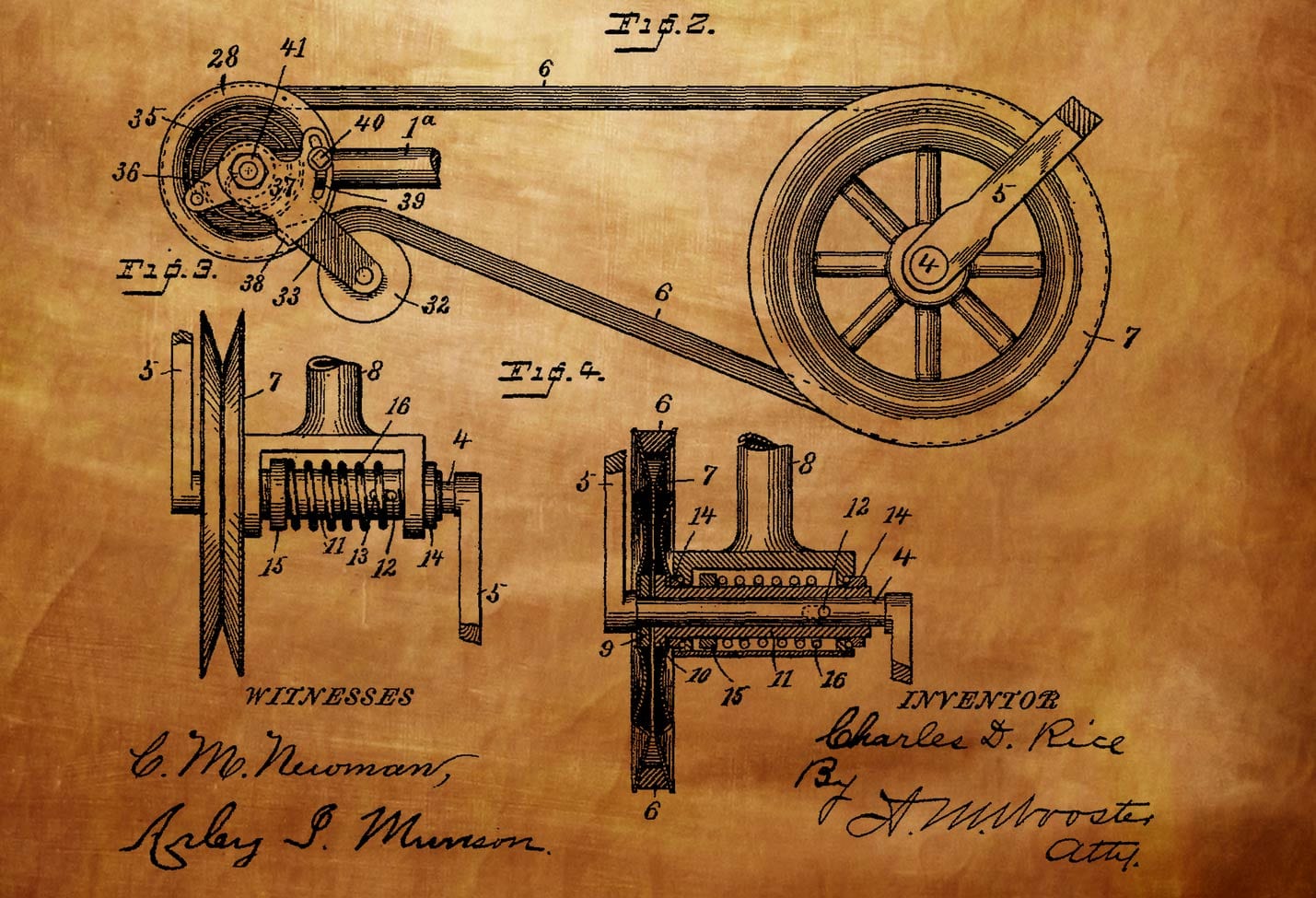So you have an invention in your hand.
Maybe it’s something extraordinary. Maybe it’s a new way of doing something ordinary. Or maybe it’s something no one has ever seen before.
So what do you do? You can’t just leave it be. What if someone steals your idea? What if they start using it and you get nothing out of it?
That’s where patents come in.
Patents provide you, with the help of the law, the sole right to exclude others from making, using, or selling your invention or idea.
Patents, Trademarks, and Copyrights
In case you’re confused about the difference between a patent, copyright, and trademark then let’s review them before learning about the patenting process.
A patent, as we just learned, stops others from using your patented invention or idea. Trademarks, on the other hand, provide protection given to a word, phrase, symbol, or logo that is used in conjunction with goods or services. And copyright is an exclusive right given for any form of literary, artistic, or musical material for a specific duration.
While patents have an expiry date, trademarks do not.
For instance, this is the patent of the earliest camera by Frank Benjamin.

And here are few examples of trademarks:

And copyrights can be applied to anything from books, music to computer codes.
How to File a Patent:
“How do I patent an idea?” is quite a common question in the intellectual property industry and it’s mostly asked by those who are new to the industry. Patents can be quite expensive depending on the type, so if you want to file a patent you need to consider many things before you go to the patent office for filing.
Below are some pointers that you need to take into consideration.
Check for Existing Patents
There is a chance that your idea might be novel, but it might not be. So, it would be better to do a prior art search to find if your idea is really novel. There are many benefits for a prior art search. If your idea is novel, then you are free to file a patent. And if not, the search firm can give you some ideas to tweak it so you can get a patent. But it’s not possible in every case.
So, it would be ideal to check if your idea has already been patented. This would avoid any future hassles with the patent office.
You can do this with a thorough search through patent databases. For instance, if you live in the U.S. you should look through USPTO’s website (United States Patent and Trademark Office). Here you will be able to search for patents dating back to 1790. Apart from govt websites that only show patents of a specific country you can go through free and paid patent databases. Here are a few of them:
You can also take help from a specialized patent attorney. Not only will they help you through your search, but they can also help with the patent filing process.
Types of patent
After you’re sure that your idea is patentable, you need to see what type of patent you need to file. This varies from country to country. For instance-
Here are some of the patent types in India-
- Ordinary or Non-Provisional Application
- Convention Application
- PCT International Application
- PCT National Phase Application
- Patent of Addition
- Divisional Application
And here are a few patent types in the U.S.-
- Utility Patent
- Design Patent
- Plant Patent
- Reissue Patent
- Defensive Publication (DEF)
- Statutory Invention Registration (SIR)
Once you figure out the kind of patent that you need to file you can begin the actual process of filing a patent.
Filing the Forms
When it comes to the actual drafting and filing of a patent, you need to see the legal procedure that your country requires you to follow. India, Australia, and the U.S. for example follow different patent filing procedures in a few key manners. So it’s important to understand the rules of your country.
Once you file for a patent there are a few things to keep in mind. Such as:
Patent Drafting
There are a few things to keep in mind when you are drafting a patent. For instance, the title of your invention should be less than 500 words. It is also recommended to add images and charts to better explain your patent.
While there is no restriction on the language of your patent, however, if you are to file your patent in a language of your choice, then you’re supposed to submit a translation in the official language within two months of submission.
Patent Application Time
On average, it takes 21 months for a patent to get approved and published. So fret not if your patent application takes time since it’s standard procedure.
You can also check the status of your patent application on the government website of your country. Apart from that, you are likely to get notification from on your registered E-Mail ID (depending upon if your country provides this facility)
Patent Rejections
In case your patent is rejected, there is no need to be dejected 🙂 You can appeal for revaluation if you think the reason for rejection was invalid.
And no, your patent will not be published in the public domain upon rejection.
Maintenance Fee
Once your patent has been granted you have to pay a maintenance fee to continue to hold the ownership of your patent. Failing to do so will make you lose ownership of the patent and it will enter the public domain, free for use.
Patent Monetization
The sole reason to file a patent is to make money from it. There are three common methods of monetization, and we have covered them before.
You can take a look at the article here: 3 way to make money from patents
In short, you can make a product from your patent. And if you think you don’t have a resource, approach a company and license your patent to them, this way you can get royalties and the other company will make a profit via a product.
There is another aggressive way to make money too which is patent infringement. If you find a product that is infringing on your patent, then you can ask the company to either license or pay royalties on your patent.
Bicycle patent from 1890 -DepositPhotos


